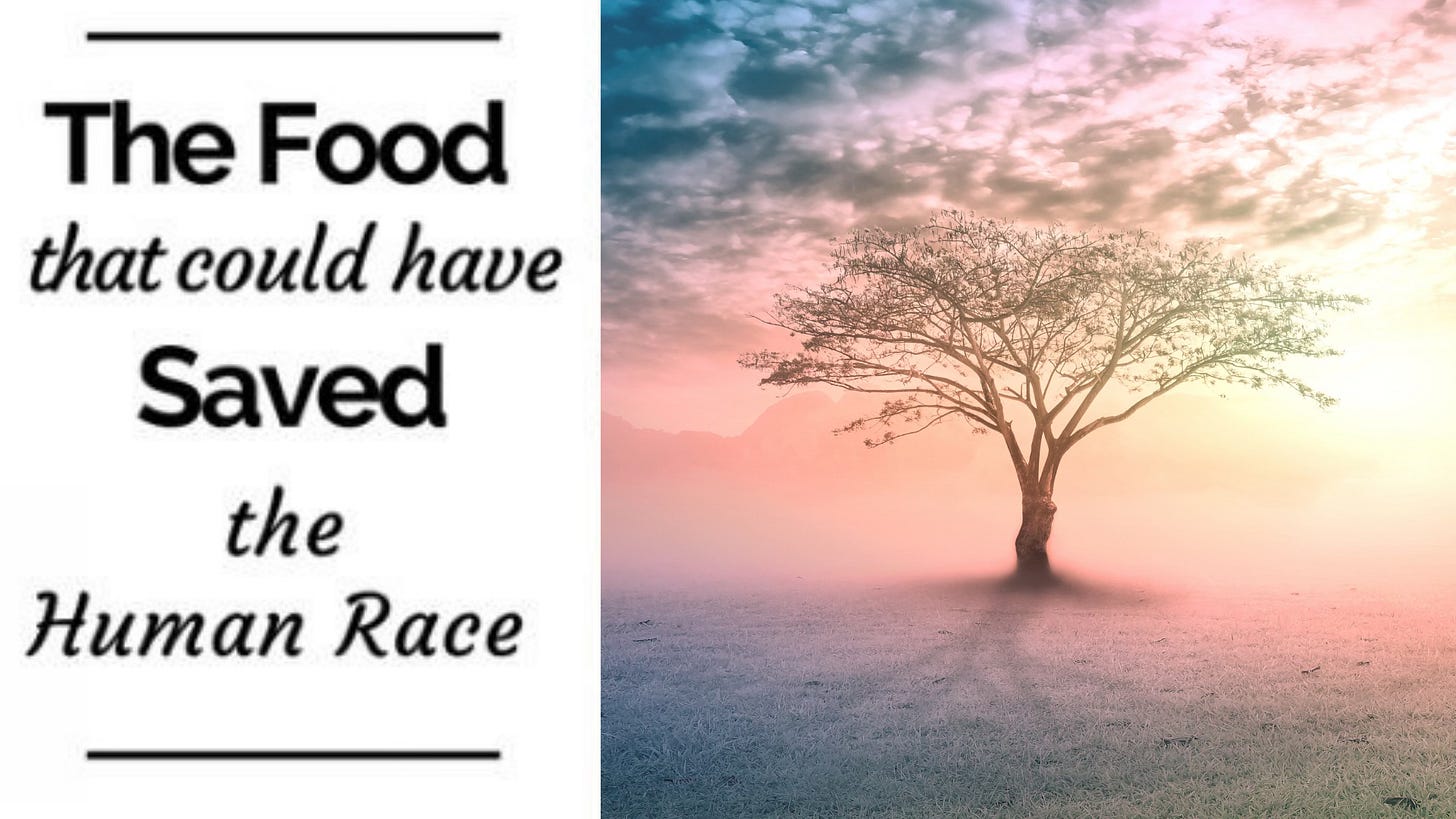Food in the Bible?
How important is the topic of food in the Bible? That is the question we are answering in this series: 10 Ways Food Has Impacted History, Life, and the World.
In The Bite of Food that Sealed the Fate of Man we learned that eating food was the impetus that brought death and a curse into the world.
Today we will talk about The Food that Could Have Saved the Human Race, namely the Tree of Life.
Two Special Trees
Aside from all the numerous fruit trees among the garden of Eden, God placed two special trees, the tree of life and the tree of the knowledge of good and evil. One tree promised life, the other promised death. What was the condition? Obedience. The Westminster Confession of Faith calls it the Covenant of Works.
Divine Antioxidant?
We looked at the tree of death in the previous post. Now we will focus on the tree of life. What was this tree? Did the fruit have some special divine antioxidants that would cause the body to regenerate into eternity?
Not according to John Calvin, who claims the tree was only a memorial. "He gave the tree of life its name, not because it could confer on man that life with which he had been previously endued, but in order that it might be a symbol and memorial of the life which he had received from God."
Kicked Out!
Yet the Bible declares that after Adam ate from the tree of knowledge, it was necessary to bar him from eating of the tree of life. God therefore kicked Adam and his posterity out of the garden never to return, guarding it with Cherubim — specifically so they would not eat of the food growing on the tree of life.
Why such drastic measures if the tree of life was only a symbol and not a perpetuating sustenance?
Transgressed the Covenant
Matthew Henry attests that the tree of life in the garden could no longer sustain Adam because he had transgressed the covenant of works (obey and you will live, transgress and you will die). He writes:
The way to the tree of life was shut. It was henceforward in vain for him and his to expect righteousness, life, and happiness, by the covenant of works; for the command of that covenant being broken, the curse of it is in full force: we are all undone, if we are judged by that covenant.
And now, no longer assured of the promise to eat from the tree and live, Adam could not rely upon that work for salvation. Rather he was now forced to look to the works of another through faith.
The True Tree of Life
When God cursed the ground, He also promised that the seed of the woman would crush the head of the serpent who had deceived her. This Seed we know is Christ. And, not only is He the Seed, He is also that very Tree of Life to which Adam needed to believe by faith, since he was no longer able to do the work of picking the fruit and eating.
Thus the covenant of works was made forever unattainable through human effort.
Calvin writes, "...I am not dissatisfied with what has been handed down by some of the fathers, as Augustine and Eucherius, that the tree of life was a figure of Christ, inasmuch as he is the Eternal Word of God: it could not indeed be otherwise a symbol of life, than by representing him in figure."
And Matthew Henry concurs, " God revealed this to Adam, not to drive him to despair, but to quicken him to look for life and happiness in the promised Seed, by whom a new and living way into the holiest is laid open for us."
It is by faith we are saved, not by works, so that no man may boast.
Whether the tree of life had special sustaining properties or was merely a memorial, one thing is certain. It was a real tree with real food. And with it came with an offer of eternal life to those who ate. Now the offer is through faith in Christ alone, the True Tree of Life — when we sup upon Him.
Food is important in the Bible.
Read more about the tree of life here.
Next: The Stew that Set Two Nations at War
Return to: Biblical Health Study



